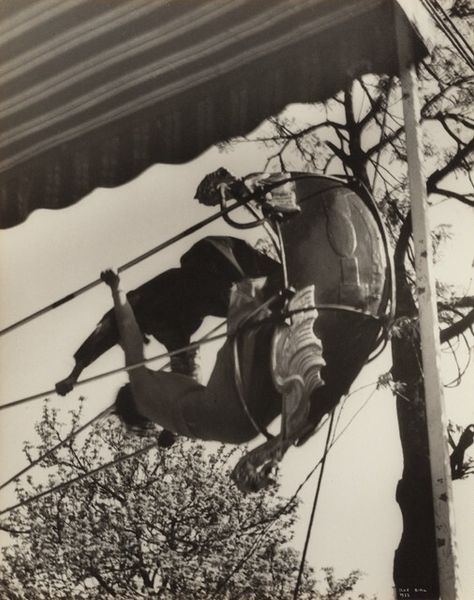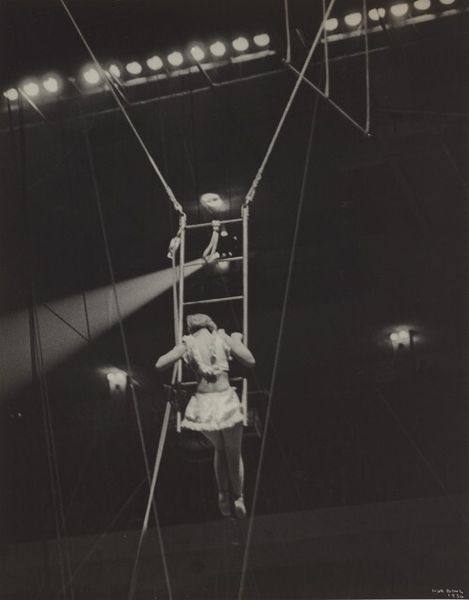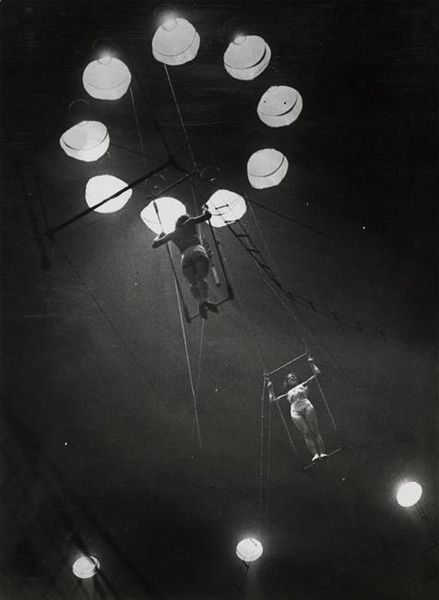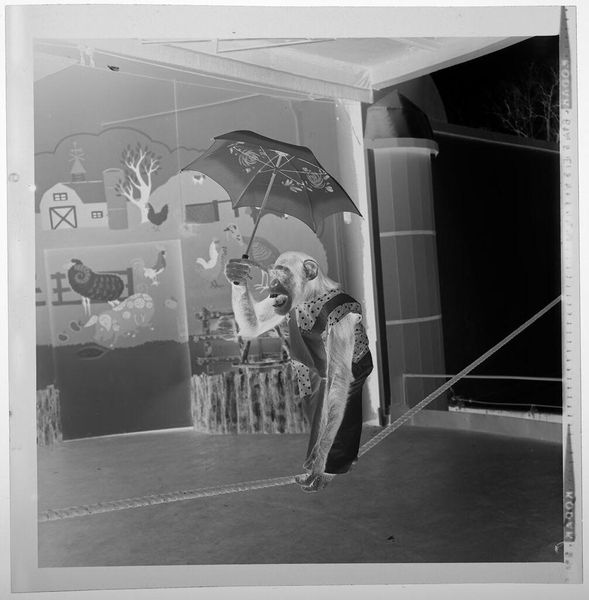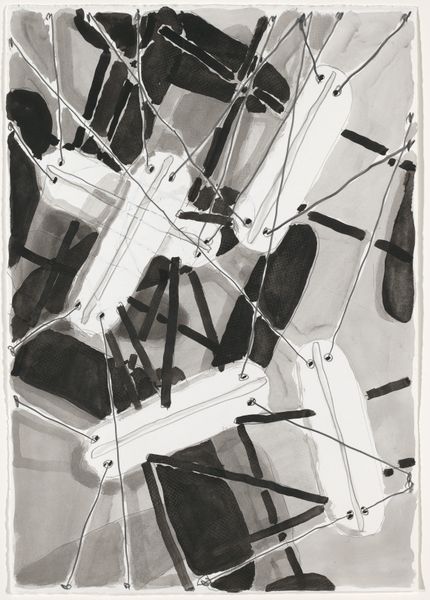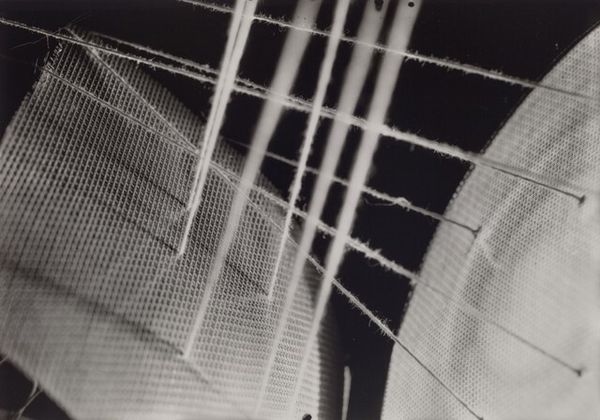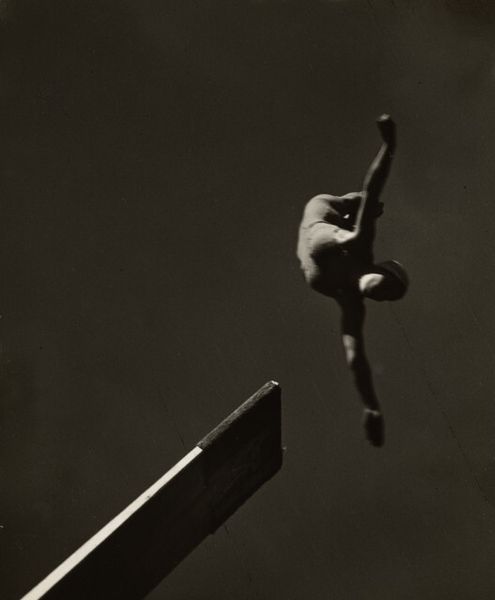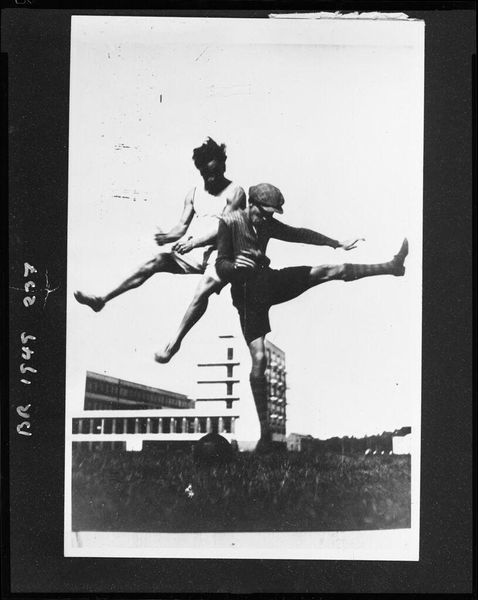
Copyright: Brassai,Fair Use
Curator: This is Brassai’s photograph, "The Kiss," a gelatin silver print taken in 1935. It captures a seemingly ordinary moment of public affection. Editor: Ordinary, maybe, but striking too. The high contrast and unusual perspective create a sense of drama. It feels intimate yet detached, doesn’t it? Like a scene observed, not participated in. Curator: Absolutely. The image appears almost voyeuristic, heightened by the subjects suspended in air, embracing in a carnival swing ride. Brassai’s work often documented Parisian street life, capturing unseen moments, especially those found on the fringes of society. He explored public and private spaces within the urban experience. Editor: That setting, a swing ride, gives the kiss a beautiful sense of precariousness. The lovers are literally elevated above everything, in their own little world for the moment, with no reference to stability. The circle formed by the ride feels significant – almost like an enchanted emblem that suspends ordinary life for this connection to flourish. Do you read a mythological reference here, with a circular motion acting as a wheel of fortune of sorts? Curator: Possibly, but within the specific context of interwar Europe and growing pre-occupation with mass entertainments, this image also encapsulates how people tried to discover, enjoy, or indeed grasp everyday pleasure even within societal anxiety. Carnival became a kind of symbolic retreat. Brassai found this tension extremely suggestive. Editor: I agree there's a push-pull happening here, a search for intimacy and normalcy amid anxiety and impermanence. I am stuck on how Brassai makes us ponder that contrast by emphasizing both the freedom and vulnerability inherent in any real expression of human attachment. The choice of a transient backdrop brings that sense of temporal tenderness to the foreground. Curator: I think we've both identified elements crucial to experiencing the work and seeing beyond surface readings here – it’s never JUST a photo of “lovers kissing." Editor: Indeed! It is instead a potent rendering of desire, escapism, and the human pursuit for realness captured by art’s ability to expose society to itself.
Comments
No comments
Be the first to comment and join the conversation on the ultimate creative platform.

